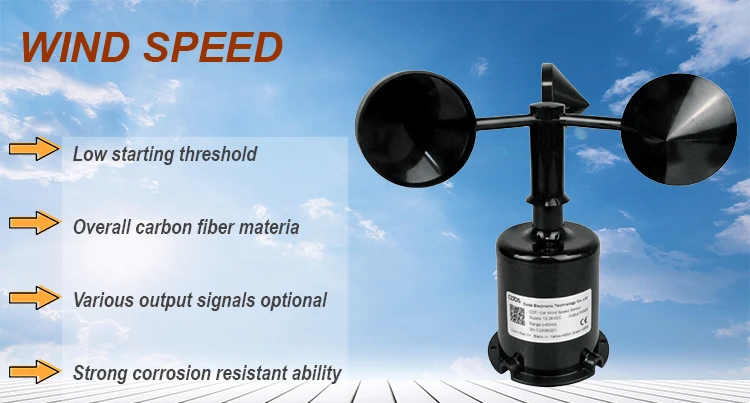
# Wind Direction Measuring Instrument: An Essential Tool for Meteorological Observations
## Understanding Wind Direction Measurement
Wind direction is one of the most fundamental parameters in meteorological observations, providing crucial information for weather forecasting, aviation, marine navigation, and environmental monitoring. A wind direction measuring instrument, often called a wind vane or anemometer (when combined with wind speed measurement), serves as the primary tool for determining this vital atmospheric variable.
## Types of Wind Direction Measuring Instruments
### 1. Traditional Wind Vanes
The simplest and most recognizable wind direction instrument is the classic wind vane. This device consists of an arrow-shaped pointer mounted on a vertical axis that rotates to align itself with the wind direction. The tail end of the vane catches the wind, causing the arrow to point into the wind.
### 2. Electronic Wind Vanes
Modern meteorological stations typically use electronic wind vanes that convert mechanical movement into electrical signals. These devices often feature:
– Potentiometers or optical encoders for precise angle measurement
– Low-friction bearings for accurate response to light winds
– Heating elements for operation in icy conditions
### 3. Ultrasonic Anemometers
Advanced wind measurement systems employ ultrasonic technology to determine both wind speed and direction without moving parts. These instruments measure the time it takes for ultrasonic pulses to travel between transducers, with wind direction affecting these transit times.
## Key Features of Quality Wind Direction Instruments
When selecting a wind direction measuring instrument, several critical features should be considered:
– Accuracy: Typically within ±5° for professional applications
– Threshold: The minimum wind speed required to produce a reading (often 0.5 m/s)
– Damping: The instrument’s ability to filter out rapid fluctuations
– Maintenance requirements: Especially important for remote or automated stations
## Applications of Wind Direction Data
Wind direction measurements serve numerous important purposes:
– Weather forecasting and climate studies
– Air pollution monitoring and dispersion modeling
– Wind energy assessment for turbine placement
– Aviation safety for airport operations
– Agricultural applications including pesticide spraying
– Marine navigation and offshore operations
## Installation and Maintenance Considerations
Proper installation significantly affects measurement accuracy:
– Mounting height should be 10 meters above ground level for standard measurements
– Location should be free from obstructions that could create turbulence
– Regular calibration checks are essential for maintaining accuracy
– Periodic cleaning prevents buildup of dirt or ice that could impair movement
## The Future of Wind Direction Measurement
Emerging technologies are transforming wind measurement:
– LIDAR systems that can measure wind profiles at various altitudes
– Compact MEMS (Micro-Electro-Mechanical Systems) sensors
– Integration with IoT networks for real-time data collection
– Machine learning algorithms for improved data analysis
As meteorological science advances, wind direction measuring instruments continue to evolve, providing ever more precise and reliable data for understanding our atmosphere and improving weather-related decision making across numerous industries.
Keyword: instrument measure wind direction